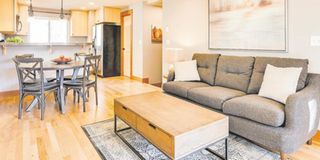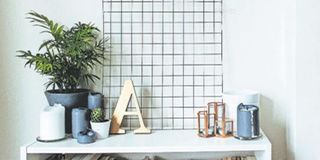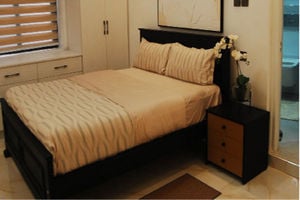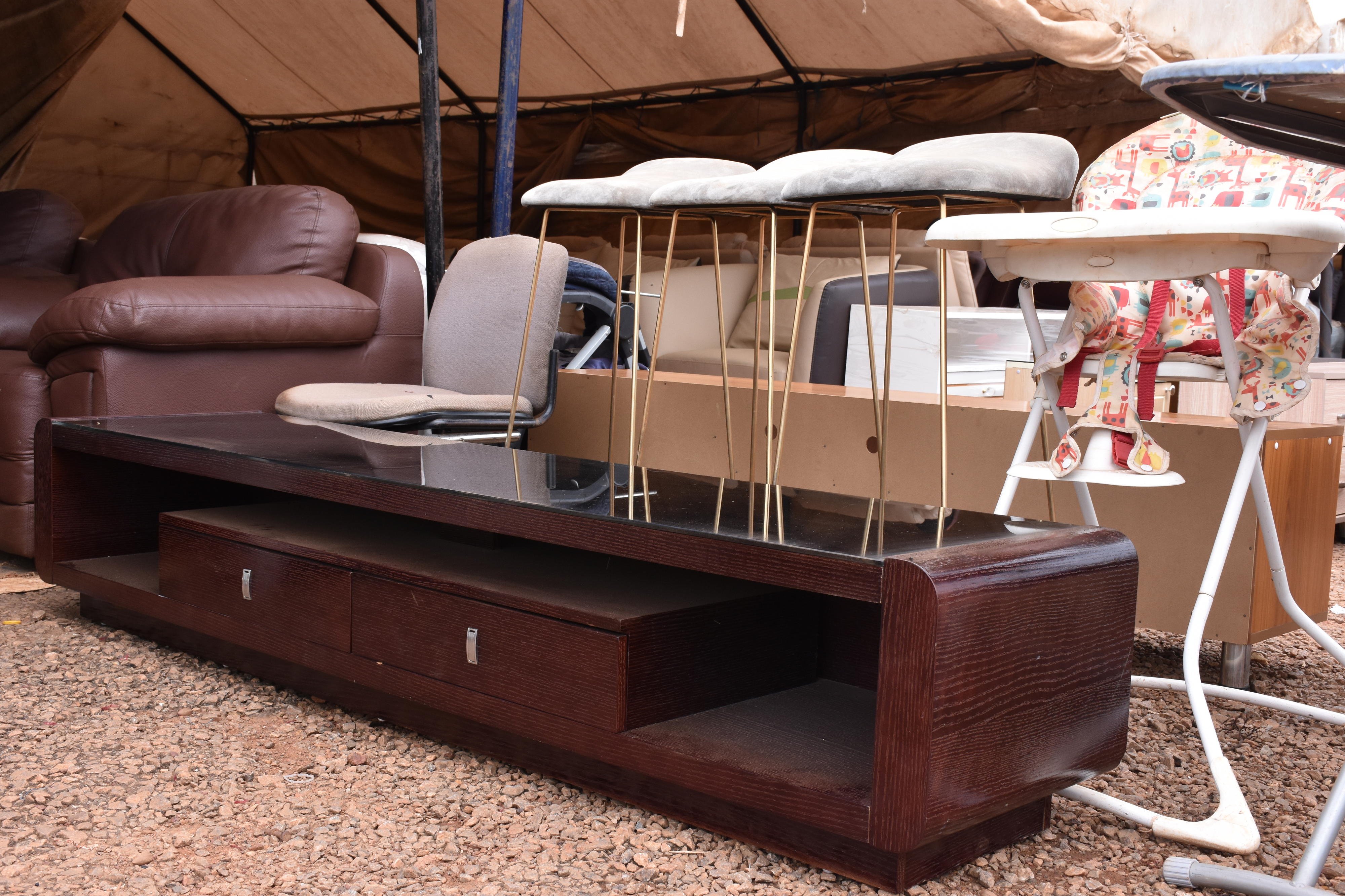
High-end rugs and furniture might seem attractive but can be an unnecessary splurge, especially if you have pets or children who might damage them.
When Kimberly Letaru began thinking about decorating her home, she was inspired by the vast array of ideas she found online.
She explains, “I searched the internet for design ideas and discovered dazzling wall décor accessories and a beautifully patterned sofa set that immediately captured my attention. At that moment, I knew I had to redecorate my space.”
Determined to stay within her budget, Letaru's first stop was a well-known furniture store in town, renowned for its statement pieces in cosy furniture and luxurious interior accessories.
There, she was delighted by the extensive selection and felt overwhelmed by the many choices available.
She recalls, “I remember looking around the store and thinking about how I could transform my home into a haven filled with every beautiful item I found. I ended up selecting vases, candle holders, wall art, coasters, and rugs. However, I later realised that despite having so many items, my home felt cluttered and lacked functionality.”
Like Letaru, many homeowners fall into the trap of making unnecessary purchases that result in a space that lacks individuality and cohesion.
To help you make more discerning choices when decorating your home, here is a guide to avoid common pitfalls.
According to interior designers, here are four home décor items that you might not need to include on your shopping list.
Wall work
Assembling decorative items can significantly impact your shopping budget, especially since wall décor often occupies a substantial portion of a room.
Walls provide a large surface area for mounting, gluing, and screwing items, which can create a visually dominant effect.
According to Immaculate Nansubuga, an interior designer at Beautiful Homes, excessive decoration on wall surfaces can lead to clutter without adding meaningful aesthetic value.
She advises against items such as oversized wall clocks, wordy wall decals, or numerous art prints, as they can make a wall feel overcrowded.
Nansubuga suggests that minimalism tends to offer more visual appeal. Oversized wall pieces can be overwhelming, and she recommends replacing them with more meaningful items, such as family portraits.
She also advises homeowners to choose wall accessories that reflect their personal identity and to consider the size of their rooms when selecting between large and small wall pieces.
Additionally, she encourages skipping overused word wall decals like “Home Sweet Home” or “Live, Laugh, Love” in favor of more unique art pieces.
In contrast, Christine Asiimwe, a homeowner, observed that common art pieces had become overly familiar and lost their sense of uniqueness.
She found that many homes she visited featured the same art prints, which diminished her personal connection to her own space.
As a result, Asiimwe began creating her own paintings to ensure her home felt distinctive and meaningful.

If you can, avoid mass produced artwork and faux items.
She explains, “I was dissatisfied with the generic views in my living room that mirrored those in other homes. It felt like a bandwagon trend of owning the same artwork, which caused me to lose my personal connection to my space.”
For those looking to avoid mass-produced art prints, exploring online platforms can lead you to a variety of artists who can create custom artwork that resonates with you and your home’s occupants.
Area rugs
While area rugs can enhance the appearance of your flooring, their practicality is an important consideration.
There are several factors to take into account before adding an area rug to your space, including the dimensions of the room, the type of flooring, and the rug’s placement.
Nansubuga notes, “It is becoming increasingly common to place rugs under kitchen or dining room tables without much thought.”
However, leaving the area beneath tables uncovered can facilitate easier cleaning and help maintain a visually appealing and tidy space for meals.
She recommends alternatives for dining areas, such as tablecloths, table runners, placemats, and napkins. These options can cover the table while still providing an inviting space for dining and gatherings.
Additionally, purchasing multiple rugs for a single space might lead to increased costs, not only for the rugs themselves but also for cleaning equipment such as steam cleaners. Investing in such equipment can be an added expense if you need to maintain multiple rugs.
Therefore, it is important to balance aesthetic appeal with practicality when choosing area rugs for your home.
Throw pillows
A popular trend in home décor involves decorative pillows featuring various prints, such as “Mr & Mrs,” inspirational quotes, floral designs, and vibrant patterns.
While these pillows can enhance the aesthetic appeal of a space and reflect personal identity, they may also overwhelm the area visually if overused. Excessive pillows can clutter your sofa, reducing its comfort and functionality.
According to Nansubuga, purchasing a large number of throw pillows for both couches and beds can be impractical. She advises, “It is more effective to use a few thoughtfully chosen pillows on your couch and bed. If you enjoy having extra pillows, consider adding some floor cushions to your space. These can provide additional comfort and seating options without compromising the functionality of your main seating areas.”
Faux items
Not everything that is faux deserves a place in your home. While it is trendy to decorate with faux plants on your shelves, these items can create additional maintenance work, particularly in terms of dusting. Consider this: Every faux item in your space can accumulate dust, contributing to a cluttered and untidy environment.
Interior designer Immaculate Nansubuga suggests, “Opting for natural plants can be a better choice, as they are generally easier to maintain and more hygienic.
Real plants not only enhance aesthetics but also improve air quality.”
While live plants do collect some dust, they offer greater authenticity and a range of benefits compared to faux alternatives. Spreading natural plants throughout your space can provide a more genuine and healthful atmosphere.





